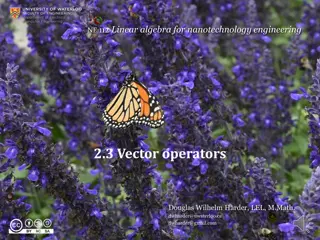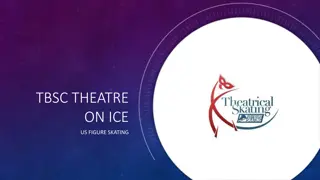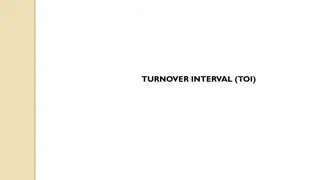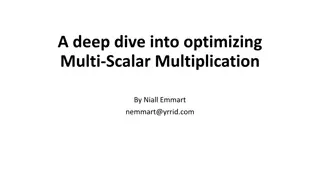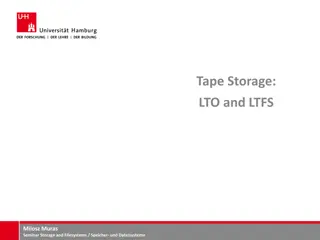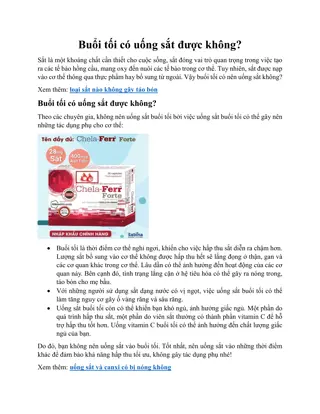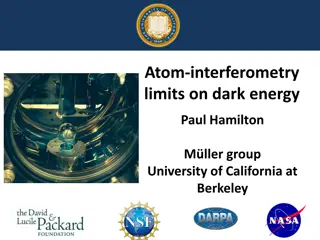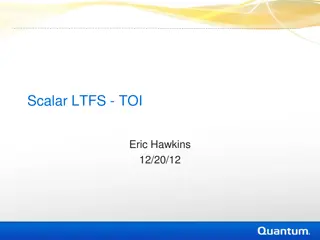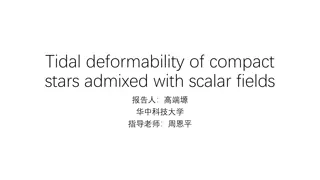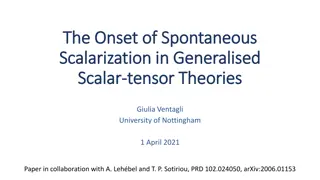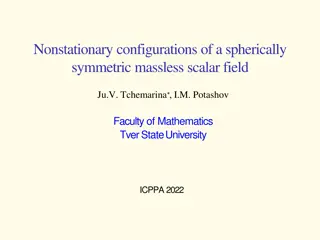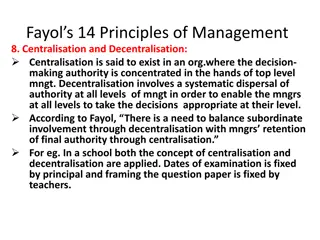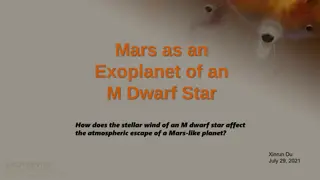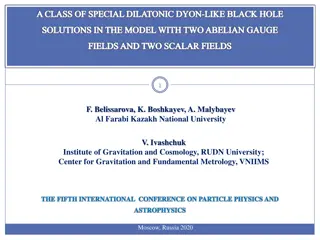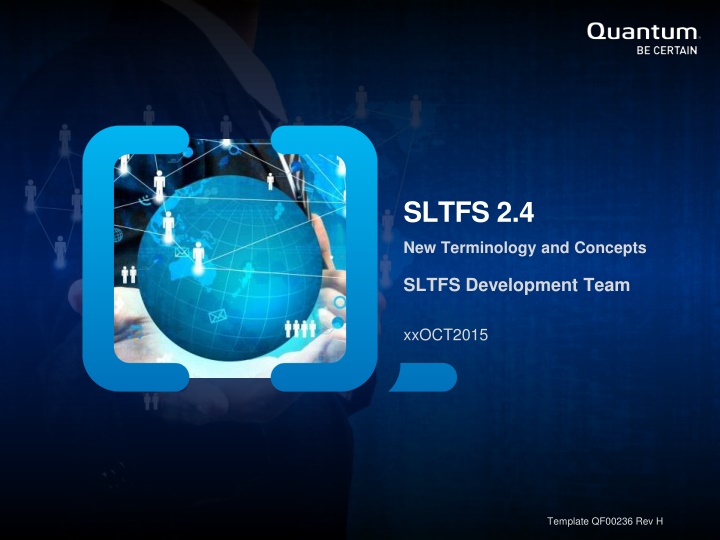
Media Pools and Volume Groups in SLTFS 2.4
Explore the terminology and concepts of media pools in SLTFS 2.4, including Volume Groups, Discovered Media Pool, and Scratch Media Pool. Learn how to attach, assign, format, sequester, and merge media for efficient filesystem management.
Download Presentation

Please find below an Image/Link to download the presentation.
The content on the website is provided AS IS for your information and personal use only. It may not be sold, licensed, or shared on other websites without obtaining consent from the author. If you encounter any issues during the download, it is possible that the publisher has removed the file from their server.
You are allowed to download the files provided on this website for personal or commercial use, subject to the condition that they are used lawfully. All files are the property of their respective owners.
The content on the website is provided AS IS for your information and personal use only. It may not be sold, licensed, or shared on other websites without obtaining consent from the author.
E N D
Presentation Transcript
SLTFS 2.4 New Terminology and Concepts SLTFS Development Team xxOCT2015 Template QF00236 Rev H
Agenda 12:30 MT New terminology and concepts 12:50 MT GUI demo 01:20 MT ACLs usage 01:40 MT Troubleshooting | 2 Quantum Confidential xxAUG2015 Template QF00236 Rev. H
New Terminology and Concepts | 3 Quantum Confidential xxAUG2015 Template QF00236 Rev. H
Terminology and Concepts Media Pool Media can be found in one of three media pools at any given time: Volume group Discovered Media pool Scratch Media pool Volume Group Depending on the user s needs, media can be grouped into single-volume VGs or multi-volume VGs. A VG name can be a barcode or a multi-word description of the media. The VG name is presented as a filesystem top-level folder. When a 2.3.0.x appliance is upgraded to 2.4 firmware, all media is placed in a single-volume VG. The VG name will be the volume s barcode or the 2.3.0.x alias. Discovered Media pool This is where media resides after it has been imported into SLTFS by the library. The admin can assign (VG assignment page) or attach (media page) discovered media to a volume group. Discovered media can also be formatted into scratch media. Scratch Media pool This is where media resides after it has been formatted (media page). The scratch pool is where media is picked up for auto-attaching to VGs for the purpose of expanding a VG s capacity. | 4 Quantum Confidential xxAUG2015 Template QF00236 Rev. H
Terminology and Concepts Attach Media residing in the discovered pool or the scratch pool can be attached (media page) to a VG and become part of the filesystem presentation. After an attach, the media will reside in a VG with the same name as the barcode, except for when the media already has allegiance to another VG. If there is prior allegiance, then the media will reunite with the VG. The VG is created if it doesn t already exist in SLTFS. The media will have allegiance to the VG until it is reformatted. The VG allegiance is stored on tape, so that media can be reunited with it s VG when attached or imported if the media is vaulted. Format Media can be formatted (media page) and become a member of the scratch pool. Any former allegiance to a VG is dissolved. Sequester Media can be sequestered (media page) and removed from the filesystem presentation. The VG will continue to be presented at the filesystem if there are other constituent volumes for the VG that have not been sequestered. VG allegiance is not lost after a media sequestered. | 5 Quantum Confidential xxAUG2015 Template QF00236 Rev. H
Terminology and Concepts Assign Media residing in the discovered pool or the scratch pool can be assigned (VG assignment page) to a VG and the allegiance to that VG becomes persistent until the media is formatted. Media already residing in a VG cannot be reassigned individually. Assign is similar to the attach except that a VG can be selected even if the media had prior allegiance to another VG. Merge Media residing in a VG can be collectively merged (VG assignment page) into an existing VG. This is an all-or-none function. All constituent media will owe allegiance to the merged VG. Merge can be used to rename a VG. Create a new VG with the name you want and then merge the old VG to the new VG. Alternatively, you can rename a VG using the a file browser as in 2.3.0.x. | 6 Quantum Confidential xxAUG2015 Template QF00236 Rev. H
Terminology and Concepts Import The SLTFS GUI is not involved with Import. When media is imported via the Library GUI or Front Panel, the SLTFS appliance will recognize the media and placed them in the Discovered Pool automatically. Vaulted media is the exception. Vaulted media are immediately reunited with it s original VG. Prepare for Export Before a VG can be exported from SLTFS, a Prepare for Export (VG export page) job is required. This job synchronizes any remaining buffered metadata or data to tape. Export The Export job sends all constituent volumes of a VG to Export slots. User intervention may be needed to keep the Export slots cleared for further export of the remaining constituent volumes of the VG. VG allegiance is not lost after a media is exported. | 7 Quantum Confidential xxAUG2015 Template QF00236 Rev. H
Terminology and Concepts Replication A VG can be replicated (VG utilities page) to a replica VG. All files, directories, and symbolic links are copied over to the replica VG. The original VG is unaltered. The replica VG must not exist when the Replication job is launched. The replica VG is created as part of the Replication job. After Replication completes, it is possible for the replica VG to have fewer constituent media than the original VG because the Replication job also performs space reclamation and file defragmentation. This replaces the Media Copy from 2.3 and 2.3.0.x releases. Repair Filesystem activities and VG operations can fail and render the VG unavailable for further activities and operations. A Repair job (VG utilities page) can be initiated to restore the VG to an operational state. VGs that are rendered unavailable due to power-lost can also be repaired. Safe Repair Some filesystem activities can fail due to tape I/O issues and can t be repaired with the normal Repair job. These types of issues require user intervention to get the tapes back in order. Meanwhile, the other constituent tapes may contain useful file data that the user may want to access. For this case, a Safe Repair (VG utilities page) can be used to reassign viable media to a new VG. | 8 Quantum Confidential xxAUG2015 Template QF00236 Rev. H
Terminology and Concepts Auto-attach When file data is written and the current media runs out of room, the writer code will first find existing constituent volumes that can take more file data. If none can be found, then scratch media is auto-attached to the VG to grow the capacity of the VG to accommodate the file data. VG replication (VG utilities page) will also follow this logic to find constituent volume room first, then auto-attach scratch media if none is found. File Spanning Spanning only functions with multi-volume VGs. When file data is written and the current media runs out of room, then the unwritten file data will be written to the next constituent volume with room, which may or may not have been auto-attached. A file can then span across two or more constituent volumes depending on how large the written file is. | 9 Quantum Confidential xxAUG2015 Template QF00236 Rev. H
Terminology and Concepts Access Control List NTFS (Windows) ACL support may be enabled in order to restrict access to volumes, directories, or files Requires AD Domain Server for authentication Access is only restricted while cartridge is within an SLTFS system with ACLs enabled SLTFS file system access roles: Admin read/write access may not be restricted by permissions User read/write access may be restricted by permissions File system access role is assigned by making the user a member of a particular AD security group (configurable) Manage permissions with Windows Explorer Security tab or other utility | 10 Quantum Confidential xxAUG2015 Template QF00236 Rev. H
Terminology and Concepts RAS Tickets New tickets added to SLTFS 2.4: DT068 Incomplete Volume Group Replication DT067 Volume Group Full DT000 System Fault System Messages SLTFS 2.4 include System Messages, where admin alerts are made for conditions that are not urgent enough for RAS ticketing. A set of fixed system messages warn of various things that require admin intervention: M101 Vaulted file not available for read M102 Vaulted file not available for write M103 Volume group low capacity threshold reached M104 Scratch pool low capacity threshold reached M105 No drives available M106 Write failed due to no space remaining M108 File/Directory collision | 11 Quantum Confidential xxAUG2015 Template QF00236 Rev. H
Terminology and Concepts Job Queue Operations launched from the following pages will initiate jobs in the Job Queue to handle the requests: Media VG Assignment VG Utilities Export Allows admin to view the progress of his/her requested operations in a centralized GUI page Which jobs are running Which jobs have completed Which jobs are awaiting scratch media, drives, or slots Allows cancellation of jobs waiting for scratch media, drives, or slots | 12 Quantum Confidential xxAUG2015 Template QF00236 Rev. H
GUI demo | 13 Quantum Confidential xxAUG2015 Template QF00236 Rev. H
ACLs usage | 14 Quantum Confidential xxAUG2015 Template QF00236 Rev. H
Troubleshooting | 15 Quantum Confidential xxAUG2015 Template QF00236 Rev. H
Troubleshooting Why am I getting this System Message? M101 Vaulted file not available for read means an attempt was made to read a vaulted file. Remedy: Import the volume indicated by the barcode from the system message details. The import logic will reunite the volume to it s VG. The desired file can then be read. M102 Vaulted file not available for write means an attempt was made to write or delete a vaulted file. Remedy: Import the volume indicated by the barcode from the system message details. The import logic will reunite the volume to it s VG. The desired file can then be written or deleted. M103 Volume group low capacity threshold reached means the VG capacity has reached the threshold that was set in the VG Configuration page. This threshold policy triggers this system message. Remedy: Attach scratch media to VG if scratch pool is disabled in the VG Configuration page. Otherwise, do nothing because scratch media will be auto- attached to the VG if scratch pool is enabled and scratch media is available. M104 Scratch pool low capacity threshold reached means the number of scratch media in the scratch pool is insufficient for proper VG capacity growth. Remedy: Add more scratch media to the scratch pool by formatting media. | 16 Quantum Confidential xxAUG2015 Template QF00236 Rev. H
Troubleshooting Why am I getting this System Message? M105 No drives available means there are more requests than there are drives available. Remedy 1: Do nothing if the job queue indicates jobs are progressing to completion and the remaining jobs will need to wait its turn to get drives to complete the request. Remedy 2: Check the partition configuration page to make sure drives have not been taken offline because of failures as indicated by RAS tickets. Attempt to bring the drive online. Remedy 3: Wait for filesystem activities to diminish and retry the operation. M106 Write failed due to no space remaining means a VG couldn t grow its capacity automatically. Remedy: Check that the scratch pool is enabled in the VG configuration page. Then, check to see if there are scratch media in the scratch pool. Format media to add scratch media to the scratch pool as needed. M108 File/Directory collision means an attach, assign, or merge job has encountered filename duplicates. Remedy: The duplicate filenames must be changed or removed on the source volume indicated in the system message details. For merge or assign jobs you can attach the source volume indicated in order to modify or remove the files. If the indicated volume is sequestered and is a constituent of the destination VG, then a Safe Repair can be issued for the VG in order to attach the indicated volume with the new VG name in order to change or removed the duplicate filenames. | 17 Quantum Confidential xxAUG2015 Template QF00236 Rev. H
Troubleshooting Why am I getting this RAS ticket? DT068 VG Replication Failure Remedy 1: If RAS ticket indicates the replication failed due to an unexpected restart, then collect an extended snapshot and contact Darryl Torske. Remedy 2: If RAS ticket indicates the replication failed during the verification pass, then collect a snapshot and contact Darryl Torske. Remedy 3: If RAS ticket indicates the replication failed due to an I/O error, then collect a snapshot and contact Darryl Torske. DT067 Volume Group Full Remedy: Check to see if there are scratch media in the scratch pool. Format media to add scratch media to the scratch pool as needed. Enable scratch pool in the VG configuration page for the VG that s named in the RAS ticket. If scratch pool is disabled intentionally, then attach scratch media to the VG. Resume operation (filesystem or job) that induced the failure. DT000 System Fault Remedy 1: If the RAS ticket details indicate /var became full, then remove older logs from /var/quantum/altfs/log to make room. Remedy 2: If the RAS ticket details indicate /scratch became full, then remove older core files, snapshots and drive traces to make room. Remedy 3: If the RAS ticket details indicate that the free swap space has depleted, then contact Darryl Torske. | 18 Quantum Confidential xxAUG2015 Template QF00236 Rev. H
Troubleshooting Why is my VG s capacity not growing automatically? VG capacity can only grow if the scratch pool is enabled for that VG and scratch media is available in the scratch pool Remedy: Check the VG configuration page to make sure the scratch pool is enabled for your VG. Then check the Media page to make sure there are scratch media available. If not, then use the Media page to format media to add scratch media to the scratch pool. Why is my job not completing? A variety of reasons can prevent a job from completing. Remedy 1: Navigate to the Job Queue page and check on the progress of your export job. If the job state indicates it s waiting for a slot, then remove tapes from the export slots. Remedy 2: Navigate to the Job Queue page and check on the progress of your job. If the job state indicates it s waiting for a drive, then give it adequate time to wait its turn at allocating a drive to complete the job. Note whether prior jobs are finishing and releasing the drives. If a job continues to wait for a drive, then an option to cancel the job is available. Remedy 3: Navigate to the Job Queue page and check on the progress of your job. If the job state indicates it s waiting for scratch media, then navigate to the Media page and format media to add scratch media to the scratch media pool. | 19 Quantum Confidential xxAUG2015 Template QF00236 Rev. H
Troubleshooting Why is my VG not seen in a file browser? Remedy 1: Navigate to the VG configuration page and make sure your VG is not offline. Bring it online if this is the case. Remedy 2: Navigate to the VG utilities pages and check whether the state is unavailable. If so, then run repair on the VG. Why is my read performance poor? Remedy 1: Use direct-I/O in the application or script for writing files to SLTFS. This will prevent file fragmentation which causes subsequent read performance issues. Remedy 2: Navigate to the Media page and check the reclamation rating and fragmentation rating of all the media in the VG. If any ratings exceed 6, then navigate to the VG utilities page and run a Replication job on the VG. The Replication job will produce a replica VG with better read performance by reducing overhead space (e.g., reclamation) and reordering file fragments (e.g., defragmentation). Remedy 3: Navigate to the Media page and observe the number of files per constituent volumes of your VG. If any exceed 1 million files, then navigate to the System configuration page and set the Max Files per Volume policy to 1 million. Then navigate to the VG utilities page and run a replication job. The replication job will create a replica VG with 1 million files per volume and performance should be better. | 20 Quantum Confidential xxAUG2015 Template QF00236 Rev. H
Troubleshooting Why does my Windows Explorer file icon have an X in it? The file resides on vaulted media and it cannot be written, read, or deleted. Remedy: Click on the file to attempt to read it. A system message will be generated in the System Message page to indicate the attempt at reading a vaulted media. Note the vaulted volume name (e.g., barcode) from the system message. Use the library to import the vaulted media. The media will be reunited with the VG and the file can then be accessed. Why is my application or script receiving EAGAIN status? Requests from the application or script cannot be handled because drives are busy working other filesystem or job requests. Remedy 1: Navigate to the Partitions configuration page and check if all available drives are online. Bring drives online if they are offline. Remedy 2: Retry the application or script again when there s less drive pressure. | 21 Quantum Confidential xxAUG2015 Template QF00236 Rev. H
Troubleshooting Why does enabling ACLs fail? Network Configuration may be incorrect Remedy: Recheck network configuration, including domain name. Configuration of AD server may not be correct Remedy: Verify server hostname or IP address via both forward and reverse DNS lookup. Why is permission denied when attempting to access a volume with ACLs enabled? Network configuration may have changed Remedy: Re-check network and remote authentication configuration Permissions may need to be adjusted Remedy: Access the volume using an account which is a member of the AD SLTFS admin security group, which is specified in the remote authentication setup. Modify permissions as desired. User authentication failed Diagnosis: Input the display name ( Melissa McCarthy , not mccarthm ) in the Test Window and click on Test User to verify the user. Remedy: If user test fails, check that the user is a member of the AD SLTFS user security group, which is specified in the Remote Authentication setup. | 22 Quantum Confidential xxAUG2015 Template QF00236 Rev. H
Q&A | 23 Quantum Confidential xxAUG2015 Template QF00236 Rev. H


